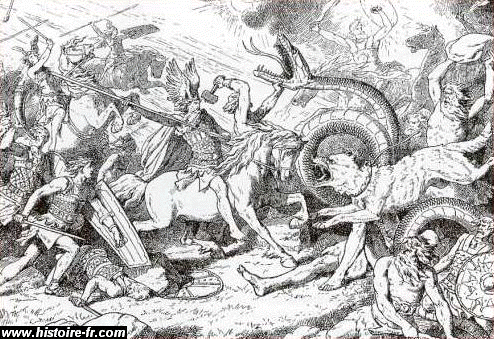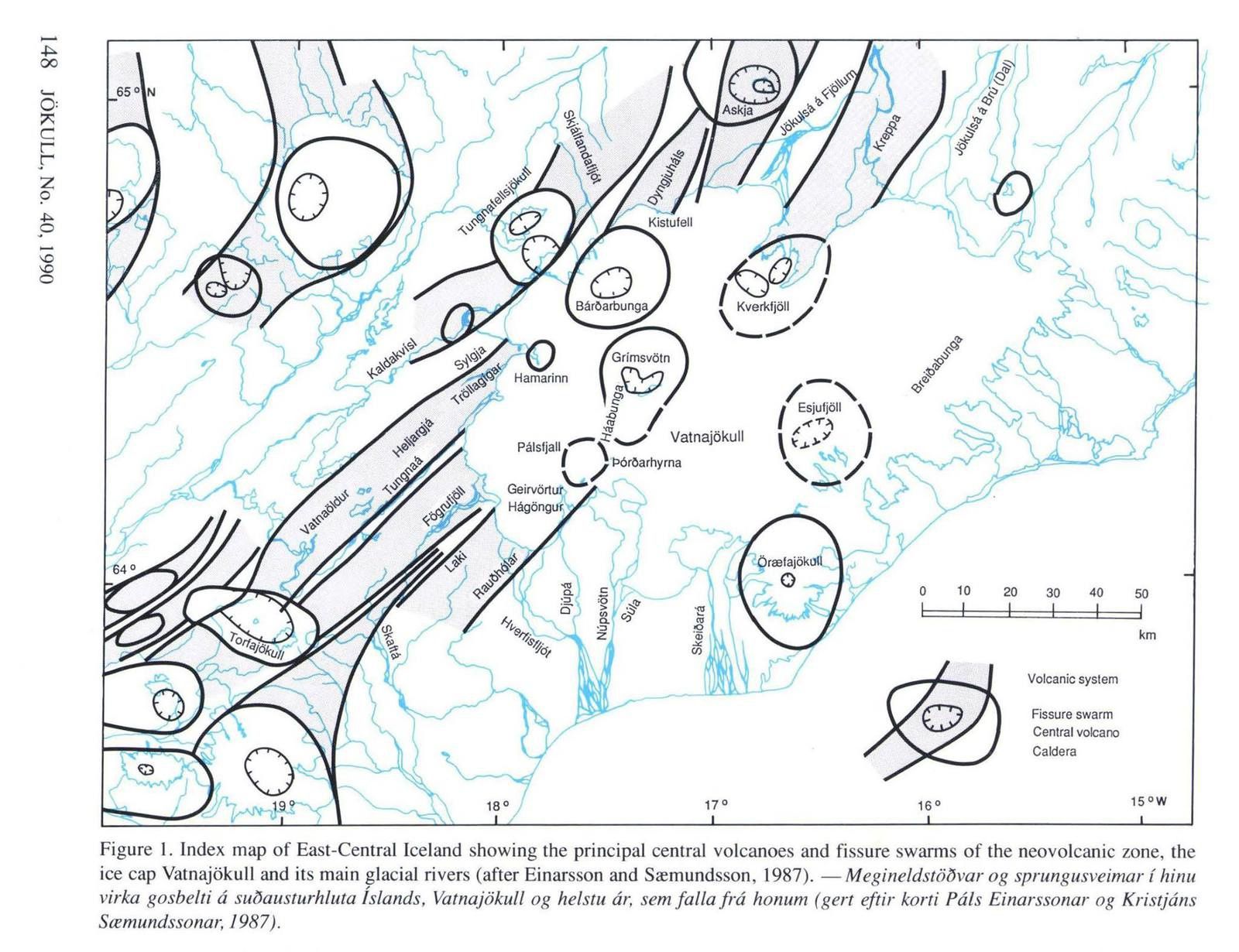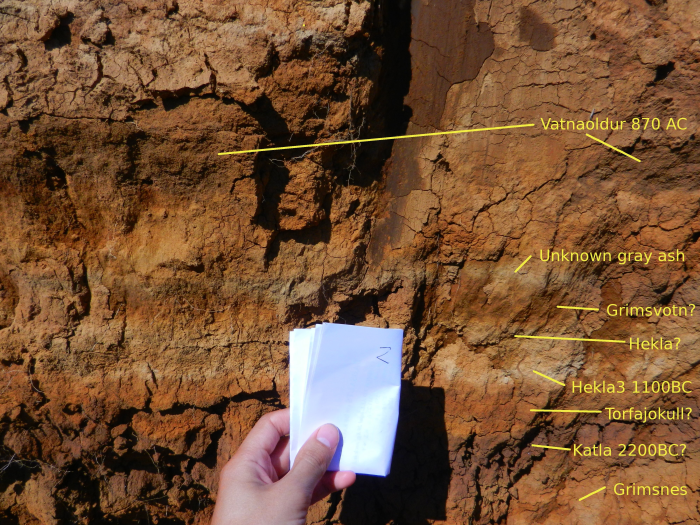Actualité volcanique, Articles de fond sur étude de volcan, tectonique, récits et photos de voyage
Par Bernard Duyck
Nordic legends:
"There was three years’ winter. The first was called the Winter of Winds: storms blew, and snows drove down, and frosts were mighty….The second winter was called the Winter of the Sword; those were left alive amongst men robbed and slew for what was left to feed on….And third winter was called the Winter of the World. Then the ancient witch who lived in the Ironwood fed the Wolf Managarm on unburied men….The Heroes in Valhall would find their seats splashed with the blood that Managarm dashed from his jaws; this was a sign to the Gods that the time of the last battle was approaching."
This text of the Norse mythology refers to Ragnarok, the end of the prophetic world including three winters without sun, Fimbulvetr, followed by a gigantic battle in the plain of Vigrid. Almost all the gods, giants and almost all men perished ... the world was overwhelmed by flames and overwhelmed by the waves.
Ragnarök is both the collapse of the old world order and the emergence of a new world. The remaining gods will meet the only couple of humans who survived by hiding during the destruction in a forest, sustentant of morning dew to stay alive. This couple will repopulate the new world.
The theme of Ragnarök is narrated by a clerk in the Icelandic Völuspá, a section of the Poetic Edda, after the year 1000, and other texts that are inspired.
The etymology of the word Ragnarök is controversial: various meanings emerge, all cataclysmic! ... "Final Destiny of the Gods", "Twilight of the Gods", "renewal of divine power", "destruction of the world" ...
Subject of numerous studies and controversial , these texts according to some references to the Apocalypse, and other Bible stories, for others to external pagan influences, reinterpreted and distorted by the following authors. They could also draw their source in the observation of natural disasters that have marked Iceland.
The north portal of the eleventh century Urnes Stave Church has been interpreted as containing scenes of snakes and dragons representing Ragnarok - photo Nina-no.
Legend and volcanism responsible:
The three harsh winters and flooding in flames suggest firstly to a "volcanic winter" related to a large-scale eruption, the flames also.
The geologist and historian Jelle Zeillinger de Boer, of Wesleyan University in Connecticut, said that the myth can be link to a catastrophic eruption that marked the spirits during the 9th century. She was followed by climatic, psychological sequelae and political and socio-economic changes.
A massive eruption took place around 870, at which time the Vikings settled in Iceland. Archaeologists call the layer of ash from the eruption of "layer of the settlement", and uses it to set the border before and after the occupation of Iceland by humans.
Many eruptions happened southwest of Vatnajökull Glacier in the Bárðarbunga volcanic system, at a crater line called Vatnaöldur, before migrating to the crater line Veiðivötn , located in a lake area. Particularly explosive explosions produced tholeiitic basalts an estimated 5-10 cubic km volume. These eruptions have a VEI 4.
Volcanoes in and around Vatnajökull - the craters Vatnaöldur and Veiðivötn SW of the glacier- map Einarsson
Sources :
- Holocene eruption history and magmatic evolution of the subglacial volcanoes, Grímsvötn, Bárdarbunga and Kverkfjöll beneath Vatnajökull, Iceland - by Bergrún Arna Óladóttir - link
- Volcano Café - The (ash) history of Iceland, in my backyard – Part II - link
- Of fire and water – the old Norse mythical worldview in an eco-mythological perspective - link
- Bárðarbunga and the Winters of Winds, of the Sword, of the World - link
Thème Magazine - Hébergé par Overblog









